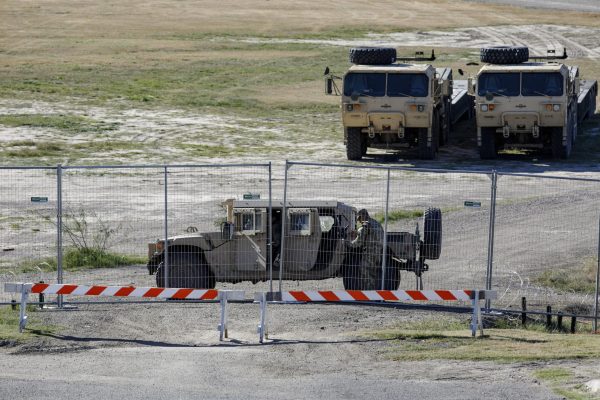Tarleton Aeronautical Team reaches new highs
June 18, 2012
Rocket scientists at Tarleton State University are in the making, and it is all revolving around the Tarleton State University Aeronautical Team. “I think we all want to be rocket scientists,” said John Phillips a Tarleton State University Student and member of the aeronautical team.
“They went up against the best aeronautical programs in the country, and proved Tarleton students can go toe-to-toe with the best. The University of Michigan was the only U.S. team to beat us. But, they had three teams and we beat two of them. So, we still have bragging rights. Tarleton also beat Virginia Tech, Cal Tech, Cal Poly, Florida Tech, Embry Riddle, University of Alabama, University of Minnesota, and the list goes on,” said math professor Bowen Brawner, the team’s adviser.
The aeronautical team has been in full throttle for nine months now, and recently competed in a CanSat competition at Jim Burkett Ranch located near Cross Plains. This is a competition between teams to design a payload and lander that will be placed in a rocket that will be launched. The lander will house an egg while being in the rocket, and must be ejected from the rocket while in flight. The main goal is to have the lander land with the egg unharmed. Tarleton’s team took 6th place out of thirty-six teams that came from all around the world.
When the team arrives to the competition they are given a rocket and an egg. The team attends with their payload and lander already built, and are given an hour to assemble their rocket before launch time.
The goal of the competition is to “…design a payload for the rocket which has to be a certain mass and certain size. The payload is ejected from rocket when the rocket reaches its highest altitude. It is then supposed to fall at a certain descent rate when the rocket reaches 620 meters then shoots out a carrier that has a parachute on it. The payload had a pressure sensor in the electronics that calculated the altitude of the carrier and when it reached 200 meters a motor turns that release another parachute to slow it down to five meters per second. At 91 meters, what was called a landerwhich had an egg in it was released with a parachute to slow it less than five meters a second. The landeris then supposed to land with the egg unharmed. While the whole time the payload is sending altitude and temperature to what is called the ‘ground station’. All information is recorded to the ground station to be watched in real time. We then look at the data and calculate everything and present what we recorded and had done right and wrong,” said Phillips.
Phillips said judging started before the team arrived at the competition. “We had to submit in a primary design review, critical design preview, and a close fight preview. How we were going to build the payload and mechanism for the reeling and what electronics we were going to use. Our bonus objective which we accomplished was to calculate impact force from the ground.”
“It takes a large group to do this. It was really neat to talk to teams all around the world and see various designs and talk to them about technology and I learned a lot about working on a team project working with electronics and rockets. The team uses a variety of skills which include math, computer science and physic aeronautics, electric engineering, and technical writing for reviews we had to submit,”said Phillips.
“All science is just applied mathematics, and it looked like complex and challenging problem. I also believe in the University’s goal of giving students real applied learning experiences. And, it doesn’t get any more real than this. We followed NASA’s engineering cycle and NASA and Naval Research Lab Scientists judged our research and provided critique throughout the project. This goes way beyond any textbook; it takes learning out of the classroom and keeps it real,” said Brawner.
The team is currently looking into competing in the NASA University Student Launch Initiative, where they will have to design their own rocket and build their own motor for it. Their rocket will then have to travel almost a mile in the air.
“I would like to thank Dr. Pfau at the office of Student Research and Dr. Wyatt, the Department Head of Mathematics. They fully support the vision. All of our test flights took place at Dr Wyatt’s ranch in Glen Rose and his experience working for Bell Helicopter and Raytheon was helpful. Dr. Dottavio was also very encouraging and supportive of the team, coming out to the test launches,” said Brawner.
“As for the team members, they were amazing. Every Texan can be proud of what we accomplished. This project was a student designed, student driven, and student built. Along the way they learned how to do budgets, give professional presentations, design and document scientific research, perform testing and do failure analysis, and deal with media. Each one of them brought an element of excellence to the team and watching them integrate it into a satellite and planetary lander that flew was great. These kids are obviously smart and but you need tenacity do work at this level. And, these kids have it,” said Brawner.




